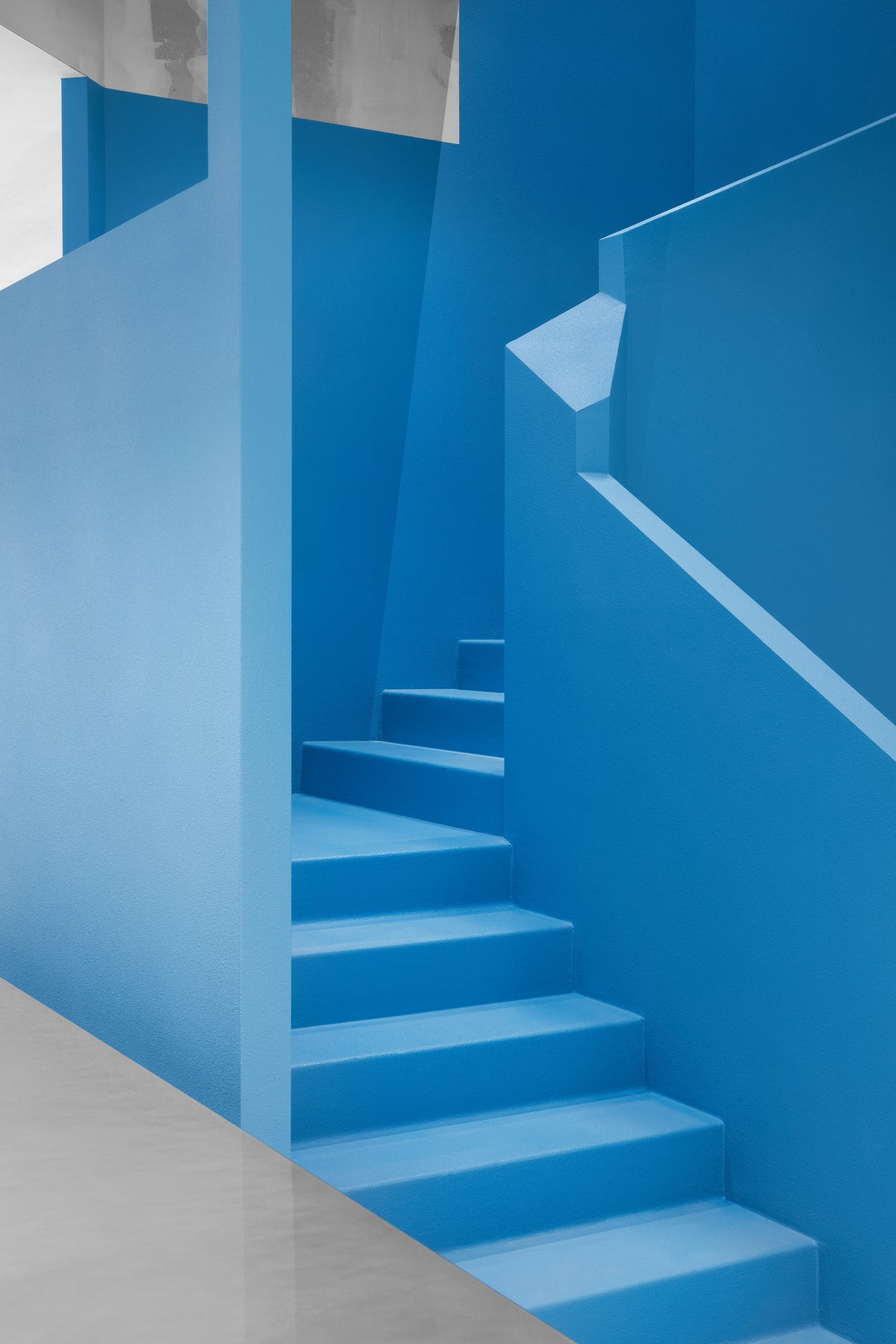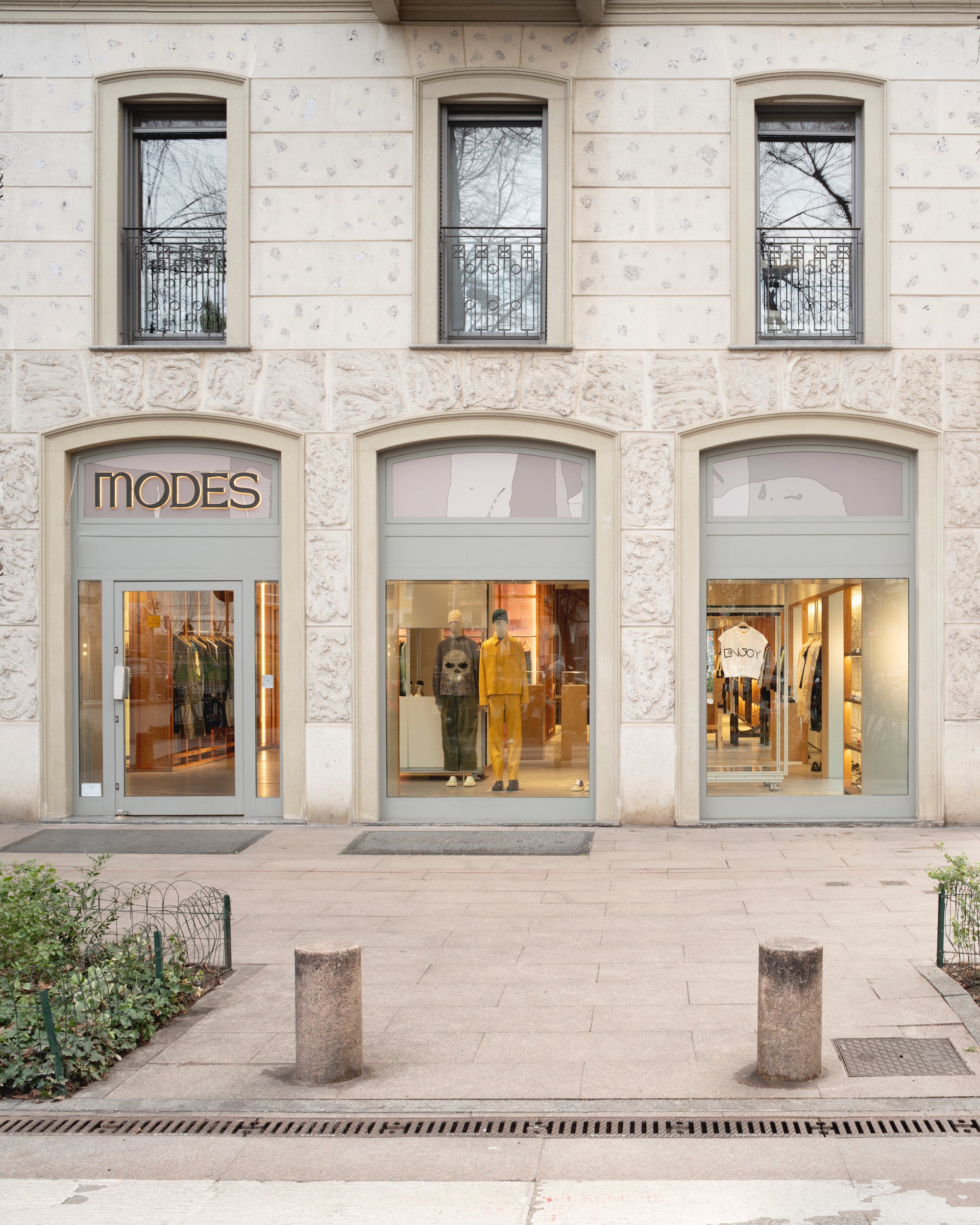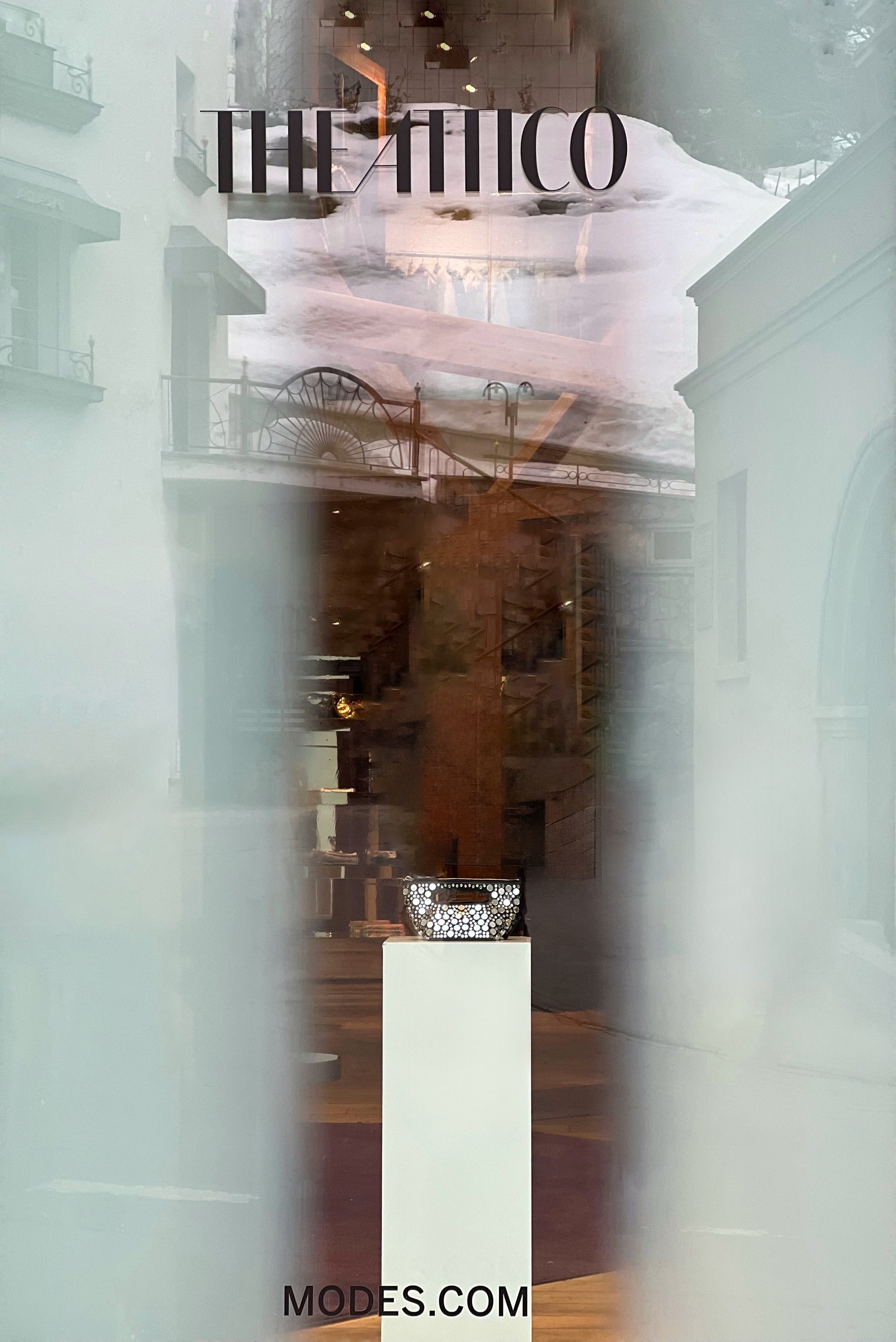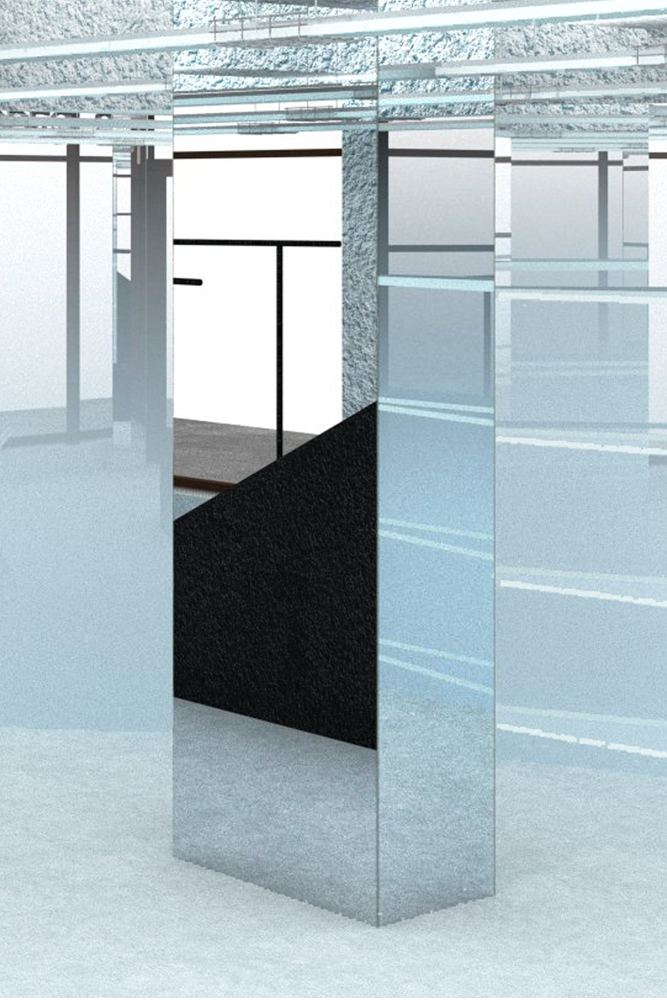The Blue Staircase
An in-depth look at MODES’ most photographed architectural feature
MODES’ Paris location was the first to be designed by Gonzalez Haase, a Berlin-based firm that made a name for itself working with galleries and art spaces before the fashion world took note and the retail clients started coming in. Since beginning work with MODES in 2020, the studio has created outposts in Porto Cervo, Cagliari, Gstaad, and Milan. Yet the Paris store remains the luxury boutique’s most Instagrammed, thanks in no small part to the iconic blue staircase connecting its floors on 17 Rue Francois 1er.
The vertical space is part of what sets MODES’ Paris hub apart from the more traditional luxury retailers of the 8th arrondissement shopping mecca, where single-brand storefronts built from predictably lavish marble and polished brass dominate the landscape. “We work a lot with raw materials – metal, aluminum, and stone – and everything has its own color, so we very rarely process or paint anything,” Gonzalez Haase co-founder Pierre Jorde Gonzalez says of the studio’s practice. “But when you do a staircase, for technical reasons there are a lot of different materials that you need to bring together.” That’s one function of the feature’s blue paint, a high-resistance coating adopted from the automobile industry, where it is used to protect cars from damage in deserts and other extreme environments.
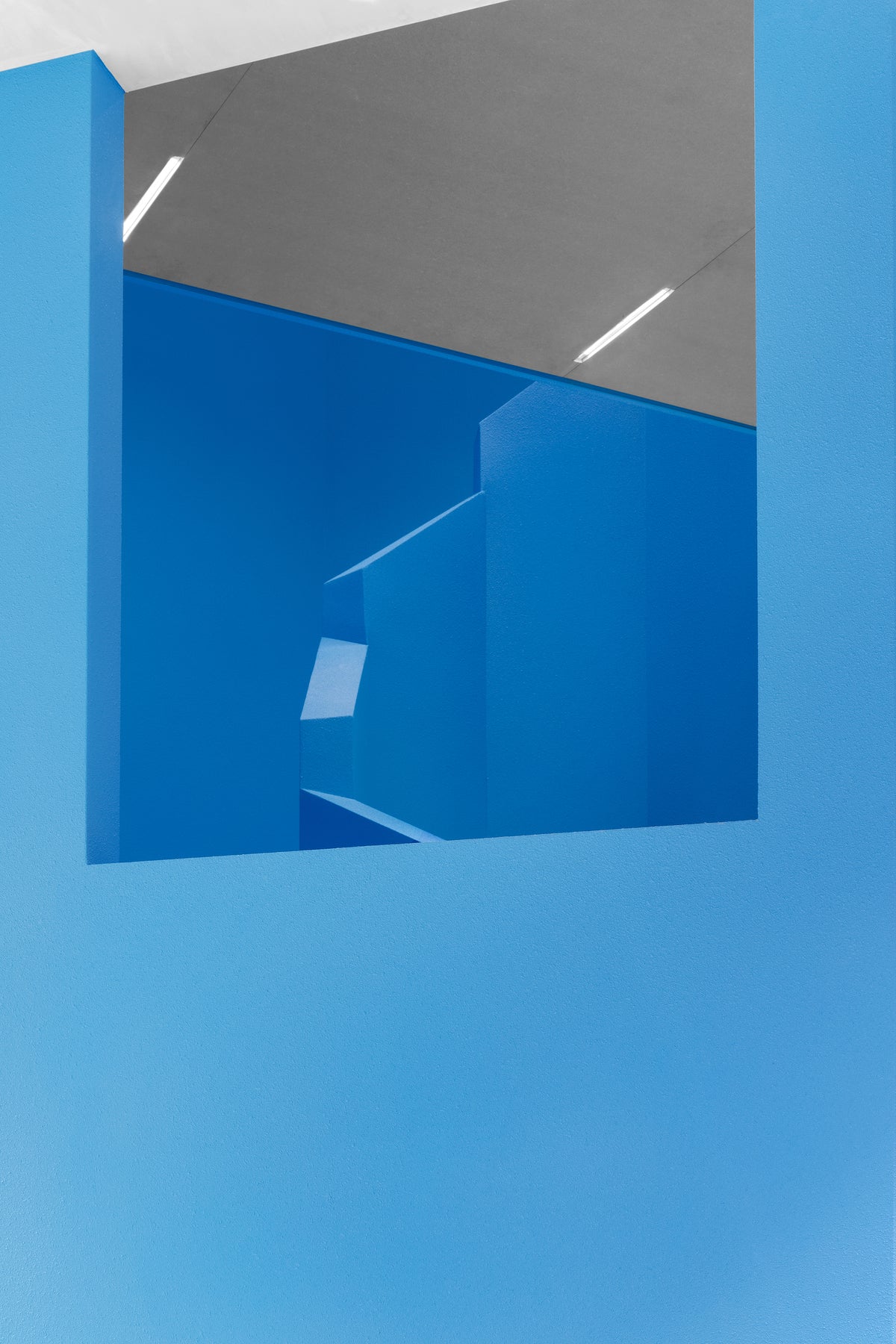
The color is also a reference to the manufacturing
process of the stairs themselves, which include high-tech components built by
robot arms capable of executing complex movements repeatedly, with the same
results each time. These machines are brightly colored for visibility, often in
industrial orange – which was considered for the staircase, too. But the blue
standard was the clear choice for MODES, bringing additional layers of meaning
to the environment. Today, we most often think of “green screen” as a technique
for replacing actual backdrops with computer-generated ones, but the chroma key
process originally involved a blue hue – an explicit reference for Gonzalez,
who was compelled by the color’s function in special effects. “It forms a kind
of photo booth – for events, experiences,” he says, “functioning almost like a
red carpet.” The result allows for a bespoke, individualized experience, where
every visitor can project their singular brand onto the MODES Paris backdrop,
in the same way that the stores are designed to showcase the unique creativity
of each one of the labels it carries.
The stairs avoid classical rounded surfaces and 90-degree
angles – a motif quite literally reflected in the Paris store’s mirrored
dressing rooms, designed to show clients a panoramic view of what they’re
trying on.
The result also looks great on social media, but that
wasn’t necessarily the intention. “Many clients will come and say that they
want their Instagram moment inside the space that we design,” says the
architect. “We weren’t thinking so much about that. It is about creating a
moment of freedom, where you are not confronted directly with product.” A
connector not only between floors, but between MODES, its brands, and its
clientele, the blue staircase is a vector for possibility – part of MODES’ ongoing study, per Gonzalez, in “what forms the future of retail
could take.”
